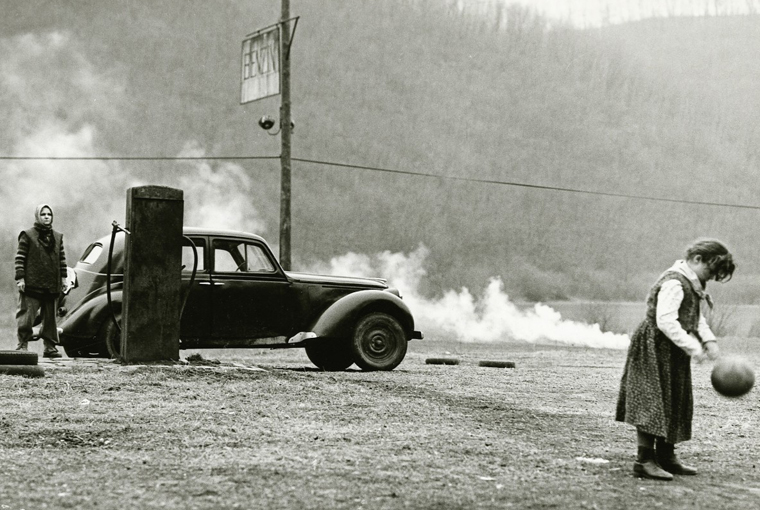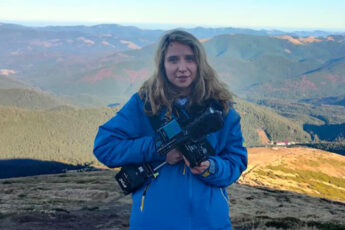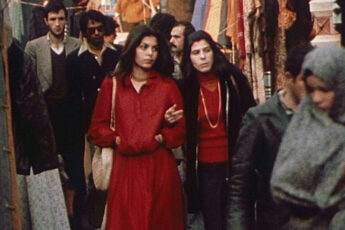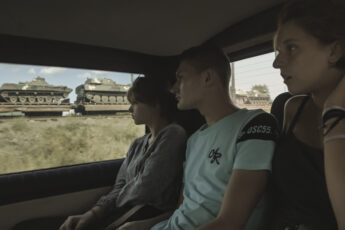
In 1940s Hungary, a haggard police inspector from the city (Péter Haumann) is called to the impenetrable fog of a mountain village to solve a disturbing case. A young girl has been found dead in the forest, causing ripples of suspicion and unease among the community. When the sole suspect commits suicide, the case is considered closed and the inspector is taken off the case, yet he refuses to let it drop and stays to investigate on his own, taking increasingly drastic measures.
It’s hard to resist comparisons between György Fehér’s Twilight and Twin Peaks, especially since they both came out in 1990. While Twilight is inherently less surreal and lacks the playful interludes of its American counterpart, both were clearly tapping into some kind of global zeitgeist of unfathomable darkness lurking in the fringes of society and using a remarkably similar set-up to explore it. Moreover, both ultimately end up sacrificing coherence of plot for the sake of atmosphere. As it happens, they also both feature giants…
Shot in a murky but lush black and white, Twilight lives up to its name, with the majority of the action set in some kind of liminal light that gives the impression that day never really breaks through the haze of this remote village. The fog is constant and relentless, literally shrouding the place in mystery. Even the interiors of the buildings seem to have their own damp, misty microclimate, creating a porous relationship between the various desolate institutions the inspector visits and the surrounding landscape.
Aside from the oppressive weather, the film is dominated by silence, which is periodically broken by a recurring series of musical interludes ranging from haunting choral music, to an electro drone noise and eerie whispering. Again, this is surprisingly comparable to Angelo Badalamenti’s Twin Peaks score. However, the majority of the shots feature long, unnatural pauses emphasized by the palpable lack of sound. The camera spends a long time lingering on faces and reactions, with the dialogue sparse and fragmented. Perhaps the most iconic scene in this regard is the unsettling interrogation of a schoolgirl. The frame is filled with her face as the inspector frantically clutches her shoulders, her eyes boggling as she is gradually coerced into whispering secrets to him.
Outside of these tensely charged confrontations, the inspector is seen on the periphery of the little action there is, spying, prying, listening in. As an extension of this, the camera seems to be watching the watcher, as if it were a character in its own right. It drifts and lurks through the scenes, surveying the space and the people that inhabit it, then lingers on after the characters have left the frame. Intriguingly, the mise-en-scene often picks out the vintage cars driven by the policemen, often following the events from inside the vehicles looking out, perhaps as a foreshadowing of the culminating scene, which is centered on a car, or perhaps as a juxtaposition between the rustic and the mechanical. At other times, it takes a god-like perspective, looking down over the tree-filled valleys in all their spooky expansiveness, the humans seeming infinitesimally small by comparison, and reiterating the idea of their helplessness in the face of whatever forces are threatening them from the forest.
The plot, which is already hard to follow by nature of its sparsity and the lack of explicit exposition, is made even more impenetrable by the fact that the various craggy, hard-boiled middle-aged men are hard to distinguish from one another. An ambiguity is created around these figures and which ones are fighting on the side of good and of evil, which ones should be trusted and which ones should not, so intentionally or otherwise, this confusion helps to add to this effect.
The film constantly hovers between the story and pure cinematic atmosphere, and whenever it seems like it’s heading towards the realm of allegory, it takes a surprisingly narrative-driven turn. Perhaps given the confusing nature of the plot, this wasn’t the right choice. The explanatory details also sometimes undermine the carefully built-up atmosphere, for example when the young girl bizarrely tells the policeman that the killer lured his victims with hedgehogs, only for these hedgehogs to disappointingly be explained away later as round, lumpy chocolates. Its greatest strength definitely lies in its intriguing impenetrability, which opens up the possibility for interpretation and reflection, and the clumsy story often works against this.
Despite its imperfections, Twilight is a masterpiece of world-building and tone that draws you in with its ominous allusions and the archetypal but effective use of remote village tropes to play on our darkest fears. It fully deserves to be seen and discussed more widely, so hopefully the new restoration and re-release will finally give it its place in the sun.




Thank you for your analysis of the film. I first saw TWILIGHT at the 1991 San Francisco International Film Festival and it has haunted me ever since. Imagine my surprise and joy to be able to watch it again albeit not on a cinema screen but on my phone. Now as then I was mesmerized by the slow pace, the dank fog drenched images and the haunting score. I recall the plot focused on the death of a young girl and the detective’s pursuit for the murderer. After a second viewing I concur with your assessment on whether the other police officers were good or not. The relentless interrogation of the peddler had the familiarity of a standard police plot then was unexpectedly upended by his suicide and the violent confrontation between the detective and one of the police officers.